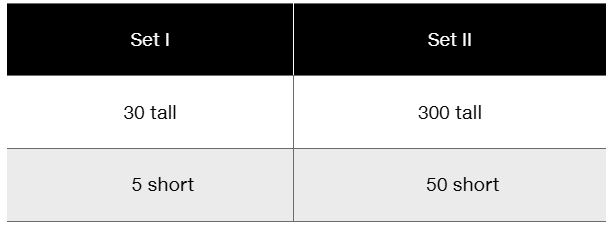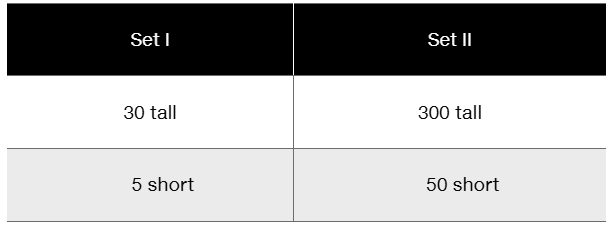 Back
BackProblem 23a
Two true-breeding pea plants are crossed. One parent is round, terminal, violet, constricted, while the other expresses the contrasting phenotypes of wrinkled, axial, white, full. The four pairs of contrasting traits are controlled by four genes, each located on a separate chromosome. In the F1 generation, only round, axial, violet, and full are expressed. In the F2 generation, all possible combinations of these traits are expressed in ratios consistent with Mendelian inheritance.
What conclusion can you draw about the inheritance of these traits based on the F1 results?
Problem 23b
Two true-breeding pea plants are crossed. One parent is round, terminal, violet, constricted, while the other expresses the contrasting phenotypes of wrinkled, axial, white, full. The four pairs of contrasting traits are controlled by four genes, each located on a separate chromosome. In the F1 generation, only round, axial, violet, and full are expressed. In the F2 generation, all possible combinations of these traits are expressed in ratios consistent with Mendelian inheritance.
Which phenotype appears most frequently in the F2 results? Write a mathematical expression that predicts the frequency of occurrence of this phenotype.
Problem 23c
Two true-breeding pea plants are crossed. One parent is round, terminal, violet, constricted, while the other expresses the contrasting phenotypes of wrinkled, axial, white, full. The four pairs of contrasting traits are controlled by four genes, each located on a separate chromosome. In the F1 generation, only round, axial, violet, and full are expressed. In the F2 generation, all possible combinations of these traits are expressed in ratios consistent with Mendelian inheritance.
Which F2 phenotype is expected to occur least frequently? Write a mathematical expression that predicts this frequency.
Problem 23d
Two true-breeding pea plants are crossed. One parent is round, terminal, violet, constricted, while the other expresses the contrasting phenotypes of wrinkled, axial, white, full. The four pairs of contrasting traits are controlled by four genes, each located on a separate chromosome. In the F1 generation, only round, axial, violet, and full are expressed. In the F2 generation, all possible combinations of these traits are expressed in ratios consistent with Mendelian inheritance.
How often is either P1 phenotype likely to occur in the F2 generation?
Problem 23e
Two true-breeding pea plants are crossed. One parent is round, terminal, violet, constricted, while the other expresses the contrasting phenotypes of wrinkled, axial, white, full. The four pairs of contrasting traits are controlled by four genes, each located on a separate chromosome. In the F1 generation, only round, axial, violet, and full are expressed. In the F2 generation, all possible combinations of these traits are expressed in ratios consistent with Mendelian inheritance.
If the F1 plant is testcrossed, how many different phenotypes will be produced?
Problem 24a
To assess Mendel's law of segregation using tomatoes, a true-breeding tall variety (SS) is crossed with a true-breeding short variety (ss). The heterozygous F₁ tall plants (Ss) were crossed to produce two sets of F₂ data, as follows.
Using the X² test, analyze the results for both datasets. Calculate X² values and estimate the p values in both cases.
Problem 24b
To assess Mendel's law of segregation using tomatoes, a true-breeding tall variety (SS) is crossed with a true-breeding short variety (ss). The heterozygous F₁ tall plants (Ss) were crossed to produce two sets of F₂ data, as follows.
From the above analysis, what can you conclude about the importance of generating large datasets in experimental conditions?


